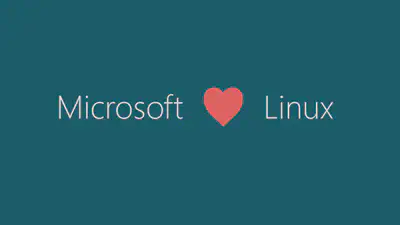Microsoft Joins the Open Invention Network Community
Today, Microsoft and Open Invention Network (OIN) announced that Microsoft has become a member of the OIN community. OIN is the largest patent non-aggression community in history with over 2.600 community member companies. It’s mission is to protect core Open Source technologies from patent litigation. It shapes the norms of collaboration as Open Source becomes more industrial and the edge between free and proprietary software becomes increasingly important. Many key innovators license their patent portfolio through OIN, including Google, IBM, NEC, Philip, Red Hat, Sony, SUSE and Toyota. Until now however, one party was missing from the community that became an increasingly important contributor to Open Source technologies, and that was Microsoft. This gap closes today. I believe this is a historic moment that will encourage innovation and dramatically reduces risks for the wider Open Source community.
I am a Free Software contributor for more than twenty years. Contributing for me was always about working towards the creation of a large body of Free and Open Source Software that benefits everybody. It was never about working against something or some entity. Later, I started presenting about Free Software arguing that “companies are community”, a notion that at the time caused concern with many long-term Free Software contributors. For me, this emphasizes that the Open Source way is about working towards open collaboration with all interested contributors.

When Free Software emerged, it was a strong competitor for all incumbent proprietary software vendors, and Microsoft was one of the largest of them. Some initial conflict was inevitable. However, attitudes change and everybody learns. Eventually, Microsoft rather impressively reinvented itself as an important Open Source contributor. The announcement today is a culmination of the process that completes for patent licensing what began with code releases and major contributions to various projects. Today, Linux based workloads on Azure are quite common. For Microsoft, joining OIN resolves an inherent conflict that existed as a leftover from the transition to being a major Free Software contributor: If technologies are developed collaboratively, the contributors should exercise joint stewardship over the result that is released under an Open Source license. Extracting license revenue from such collaboratively developed Open Source technology creates a rift and undermines collaboration. By “making peace with the free world” and joining OIN, Microsoft may pre-empt it’s own patent licensing revenue for Android and other technologies covered by the OIN Linux System definition, but it gains significant reputation and acceptance in the wider Open Source community. Since this is where software innovation is happening, the long-term benefits of this strategy should outweigh the cost by far.

For Open Invention Network, today’s news are a major step forward. Membership in the OIN community is free of charge. All participants cross-license their patent portfolio within the field-of-use definition of core Open Source technologies. It is not necessary to hold a patent portfolio to join OIN. This means everybody in the network immediately benefits from the new cross-licensing commitment of over 60.000 patents made by Microsoft. A network like OIN becomes more and more valuable the more patents are cross-licensed and the more software technologies are covered by that (a network effect :-). With Microsoft on board, it should be even more obvious that joining OIN is the best and also the easiest way to enter the patent “no-fly zone” over Linux. This benefits Open Source innovation and the wider Open Source community, which in turn contributes Free Software to the common good. Everybody wins.